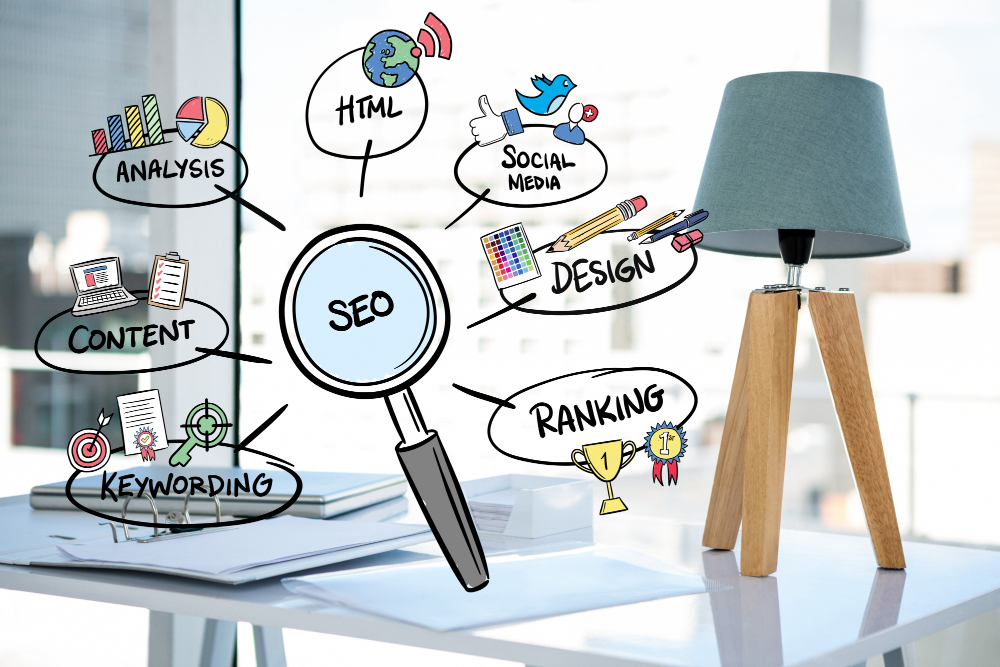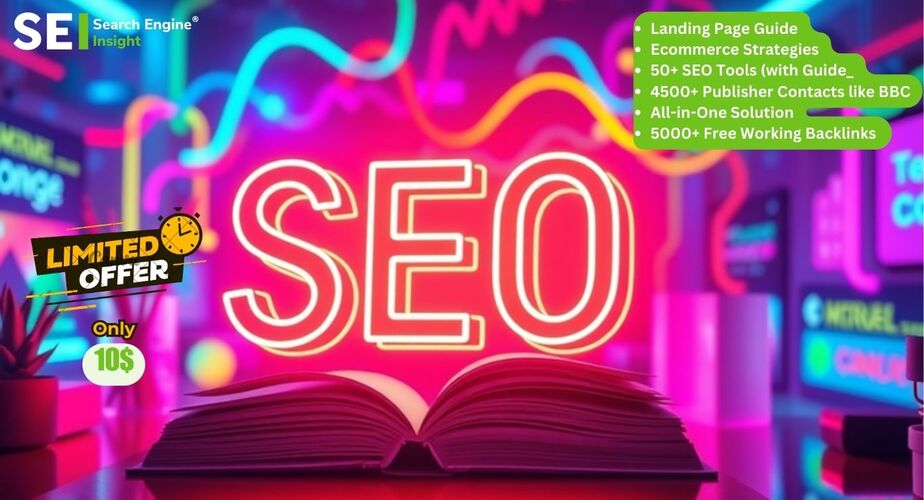What is Website Optimization? Key Strategies for Better Performance
Website optimization sounds a little techy, doesn’t it? Like something only developers in hoodies working in dimly lit coffee shops can do. But let’s be real — it’s way more than just code and caffeine. It’s about making your website better. Smarter. Faster. More enjoyable to use. It’s about turning a digital space into something people actually want to visit — and stay on.
At its core, website optimization is the process of improving your site’s performance. That could mean improving how fast it loads, how easy it is to navigate, how well it converts visitors into customers, or how visible it is in search engines like Google.
But here’s the thing — “optimization” isn’t just one thing. It’s a whole bundle of strategies, tweaks, and experiments. Sometimes it’s technical. Sometimes it’s creative. Often, it’s both. And it’s never truly finished.
You fix one thing… something else needs tuning. You upgrade a feature… another suddenly feels clunky. That’s just the nature of the web. It evolves. Constantly.
How to optimize your website step-by-step
Website optimization might sound overwhelming at first, but the key is to take it step by step. You don’t have to fix everything in one day. Start small, stay curious, and build momentum.
1. Run a full audit
Before you can improve anything, you need to know what’s actually going on. Use tools like Google PageSpeed Insights, GTmetrix, or Lighthouse to get a pulse check. Look at load times, mobile responsiveness, SEO errors, and user behavior.
At this stage, don’t try to fix everything — just observe. You’re gathering intel.
2. Set clear goals
What’s your priority? More traffic? Better conversions? A smoother mobile experience? Be specific. A goal like “make the site better” is too vague. A goal like “increase product page conversions by 20% in 3 months” gives you focus.
3. Optimize for speed
Speed is a universal win. Compress large images, minimize code, use lazy loading, and consider a CDN. Even shaving off a second can reduce bounce rates and improve user satisfaction.
4. Improve mobile usability
Your site should feel just as smooth on a smartphone as it does on a desktop. Use responsive design. Make sure buttons are easy to tap. Fonts should be readable without zooming in.
5. Refine your navigation and UX
Clear menus. Logical page flow. No dead ends. Think like a visitor who’s never been here before — can they find what they need in three clicks or less?
6. Fine-tune your content and CTAs
Review your headlines, copy, and calls-to-action. Are they clear? Compelling? Actionable? Add internal links, clarify value propositions, and cut the fluff.
7. Test, test, test
Use A/B testing to compare variations of pages, buttons, layouts. Sometimes the smallest tweaks (like changing a button color or headline) make the biggest impact.
8. Monitor and repeat
Website optimization isn’t a one-time thing. Track your progress. Adjust based on data. Then do it again. That’s how real growth happens.
The goals of website optimization
So, what’s the point of all this? Why go through the effort of tweaking, testing, and tuning your website like it’s a high-performance engine?
The short answer? Because a well-optimized website works better. For everyone.
But let’s dig deeper.
1. Faster load times = happier users (and more conversions)
People are impatient online. If your site takes more than a few seconds to load, you’re already losing visitors. Literally — studies show that even a one-second delay can hurt conversions.
Speed optimization isn’t just a technical checkbox — it’s a competitive edge. Fast sites feel reliable. Trustworthy. Professional. And when users feel that, they’re more likely to stick around and take action.
2. Improved user experience (UX)
Optimization is about removing friction. Making it easier for people to find what they need. Whether that’s simplifying your navigation, cleaning up cluttered layouts, or making buttons actually look like buttons — small changes in UX can create huge wins in usability.
Think of your website like a physical store. If people can’t find the entrance, or the checkout line is hidden, they’ll walk out. Same online.
3. Higher search engine rankings (aka SEO benefits)
Google pays attention to how well your website performs. Load speed, mobile-friendliness, time-on-site — all of these are ranking factors. An optimized site gives Google more reasons to show it to people searching.
Better optimization = better visibility. And more visibility means more organic traffic (read: free traffic).
But here’s the twist — this isn’t just about pleasing algorithms. When your site works well for humans, it tends to work well for search engines, too.
4. Lower bounce rates
Ever clicked a link, waited too long, or saw a weird layout — and immediately hit “Back”? That’s a bounce.
A high bounce rate usually signals a problem. Something didn’t click. Maybe the site was slow. Maybe the content wasn’t relevant. Maybe it just felt sketchy.
Website optimization helps keep people engaged. It aligns what users expect with what they actually experience. The goal? Make them feel like, “Yes, I’m in the right place.”
5. More conversions (leads, signups, sales — you name it)
Let’s be real — this is what most businesses care about. And rightly so.
At the end of the day, your website should do something. Sell a product. Capture a lead. Book a call. Whatever your goal, optimization helps more visitors take that action.
We’re talking about tiny tweaks that make big impacts: clearer CTAs, shorter forms, better headlines, more persuasive copy. Sometimes it’s not about driving more traffic — it’s about doing more with the traffic you already have.
6. Better mobile performance
Over 50% of web traffic now comes from mobile devices. If your site isn’t mobile-optimized, you’re leaving money — and customers — on the table.
Buttons should be easy to tap. Text should be readable without pinching and zooming. Pages should load quickly even on slower mobile networks.
Mobile optimization isn’t optional anymore. It’s survival.
7. Accessibility for everyone
An often overlooked — but incredibly important — goal of website optimization is making your site accessible to people with disabilities. That includes screen reader compatibility, keyboard navigation, alt text for images, and color contrast for readability.
Optimizing for accessibility isn’t just about compliance (though that matters). It’s about inclusivity. It’s about building something everyone can use, regardless of ability.
And bonus? Many accessibility improvements help with SEO and UX too. Win-win.
8. Higher engagement and longer time on site
When your site is engaging — when it looks good, reads well, and works smoothly — people spend more time on it. They explore. They click. They read. They interact.
And that’s not just a feel-good metric. Increased engagement often leads to higher conversion rates and better search rankings.
Think of it like this: the longer someone stays, the more trust you’re building. And trust is currency online.
9. Cost efficiency
Optimizing your website often means you can get more from what you already have.
Why spend thousands on ads to bring in more traffic if your site can’t convert the traffic you already get?
Sometimes, a single improvement — a streamlined checkout flow, a faster landing page, a stronger CTA — can save you a ton on customer acquisition costs.
10. Competitive advantage
Let’s not forget — people compare. If your site feels outdated, confusing, or sluggish, and your competitor’s feels modern, fast, and smooth… guess who wins?
An optimized website doesn’t just perform better — it feels better. And that feeling sticks. It can be the difference between someone choosing you or someone else.
The role of analytics in website optimization
Analytics. It’s the compass. Without it, you’re just sailing in the dark, hoping you’ll end up somewhere good.
Google Analytics, Hotjar, Mixpanel, Crazy Egg — these tools show you what’s working, what’s not, and where users are getting stuck. They tell you how people find your site, how long they stay, what pages they visit, and where they bounce.
For example, let’s say you notice a ton of traffic landing on your pricing page, but hardly anyone converts. That’s a goldmine of insight. Something on that page — maybe unclear pricing tiers, maybe weak copy — is pushing people away. That’s your cue to experiment, optimize, and test until the numbers improve.
And remember: numbers are only part of the story. Pair analytics with real user feedback — surveys, support tickets, user testing. Let the data guide you, but let people’s voices shape your decisions too.
8 elements of websites to optimize
There’s a lot you can optimize. But here are eight areas where you’ll get the most bang for your buck:
- Speed
We already said it, but it’s worth repeating. Fast websites win. Every second counts. - Mobile experience
If it’s clunky on a phone, it’s broken. Period. - Navigation
Can users find what they need without frustration? Clear menus, search bars, breadcrumbs — they all help. - Calls-to-Action (CTAs)
“Buy now,” “Sign up,” “Contact us.” These need to pop. Placement, color, wording — all of it matters. - Forms
Long, complicated forms are conversion killers. Keep them short. Ask only what you need. - SEO
Meta tags, alt text, keyword-rich content. Make it easy for search engines to understand your pages. - Content
Is it helpful? Clear? Up-to-date? Good content builds trust and drives action. - User flow
Track the full journey from landing page to conversion. Where are people dropping off? That’s your optimization roadmap.
Search engine optimization vs. website optimization (disambiguation)
Let’s clear something up: SEO and website optimization are not the same thing, though they’re definitely related.
Search Engine Optimization (SEO) is about making your site more visible on Google and other search engines. It’s keyword research, backlinks, meta descriptions, schema markup — all that good stuff.
Website optimization is broader. It includes SEO, yes, but also touches on user experience (UX), performance, design, layout, conversion rates, and more.
Think of it like this: SEO gets people to your site. Website optimization makes them stay — and act.
You could rank #1 for a juicy keyword, but if your site is slow or confusing, visitors will leave in seconds. That’s why both matter. You need traffic and a site that deserves it.
Tools and resources for website optimization
There’s a tool for everything these days. Some are free, some premium, but all can give you an edge.
- Google PageSpeed Insights – For analyzing and improving page speed
- Hotjar or Crazy Egg – For heatmaps and session recordings
- Google Analytics – For tracking visitor behavior
- SEMrush / Ahrefs / Moz – For SEO research and tracking
- Optimizely / VWO – For A/B testing and experimentation
- Screaming Frog – For crawling and analyzing SEO issues
- Lighthouse (Chrome DevTools) – For deep technical audits
You don’t need to use them all — just the ones that align with your goals. Start small, experiment, and grow your toolkit as you grow your site.
Website optimization is an ongoing process
This can’t be stressed enough: website optimization is never done.
You tweak one thing, another needs adjusting. Google updates its algorithm. Your competitors redesign their site. User expectations change. Devices evolve.
That’s the web. It’s fluid, dynamic, a moving target. And that’s kind of the beauty of it.
So, treat optimization like brushing your teeth. Not a one-time task, but a regular habit. Review your analytics. Run fresh tests. Keep listening to your users. Stay curious.
Even small improvements can make a big difference over time. 0.5% increase here, 1% lift there — it all adds up. It’s a game of compounding returns.




